 Who would have thought we’d be making masks for personal and work use…not me! Some people are totally heroes in my book for the 100’s or 1000’s of masks they’ve made. Thank you for taking care of our families, friends, and the medical community!
Who would have thought we’d be making masks for personal and work use…not me! Some people are totally heroes in my book for the 100’s or 1000’s of masks they’ve made. Thank you for taking care of our families, friends, and the medical community!
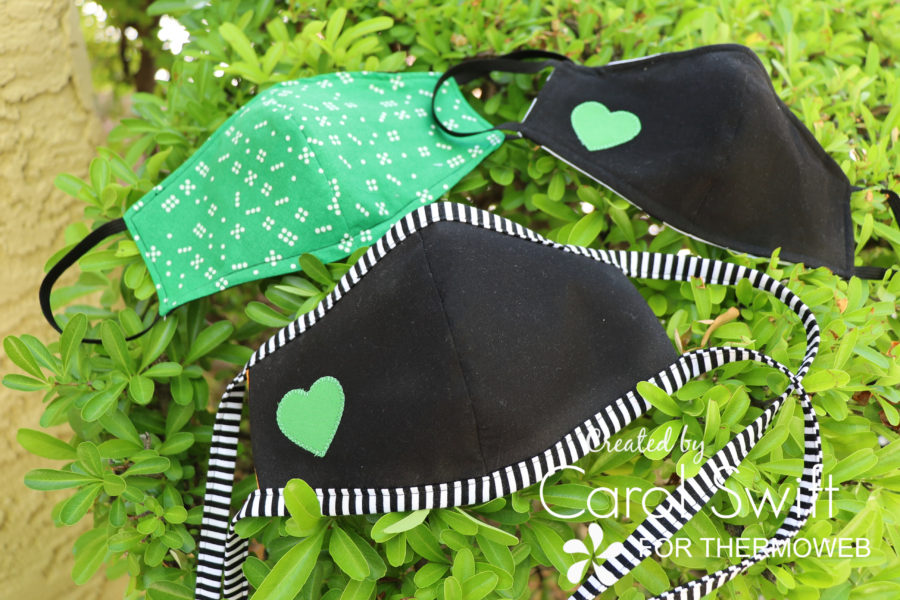
The new Heat n Bond Interfacing for masks, Crafter’s Edge Mask Die, and Heat n Bond Lite Iron-on Adhesive make it easy to create masks for everyday use.
“Working closely with The Masks Now Coalition, Therm O Web (the manufacturers of HeatnBond brand products) has developed this new interfacing for use in the MasksNow.org 3-Layer Mask Pattern from Created for Crisis, as well as other patterns that call for lightweight 100% polyester nonwoven, sew-in interfacing.”
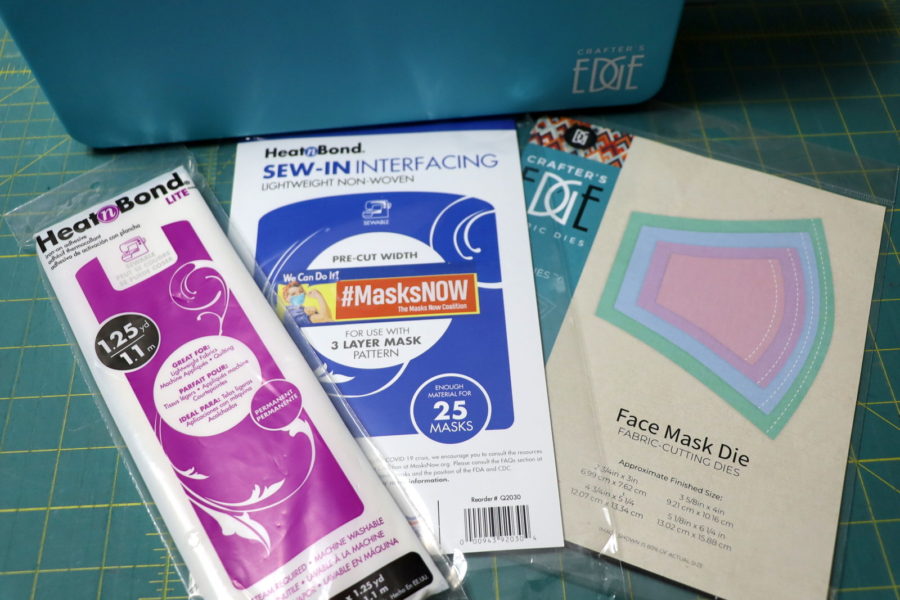
Directions come with the Face Mask Die and they are really easy to follow. Just run your mask front, lining, and interfacing through the Crossover II Edge using the mask die.
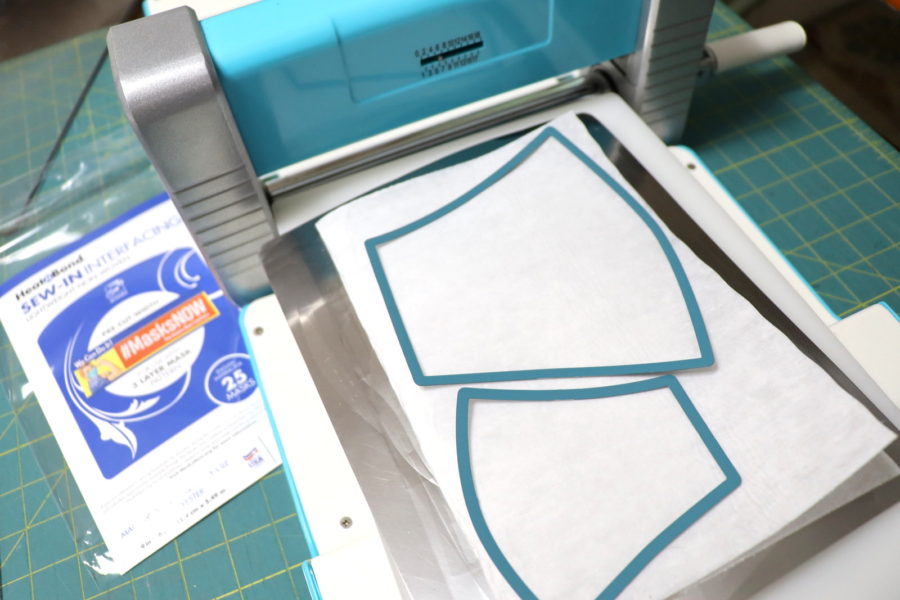
Once you’ve cut out the masks, sew the rounded edge of fabric and interfacing mask pieces with the right sides together.
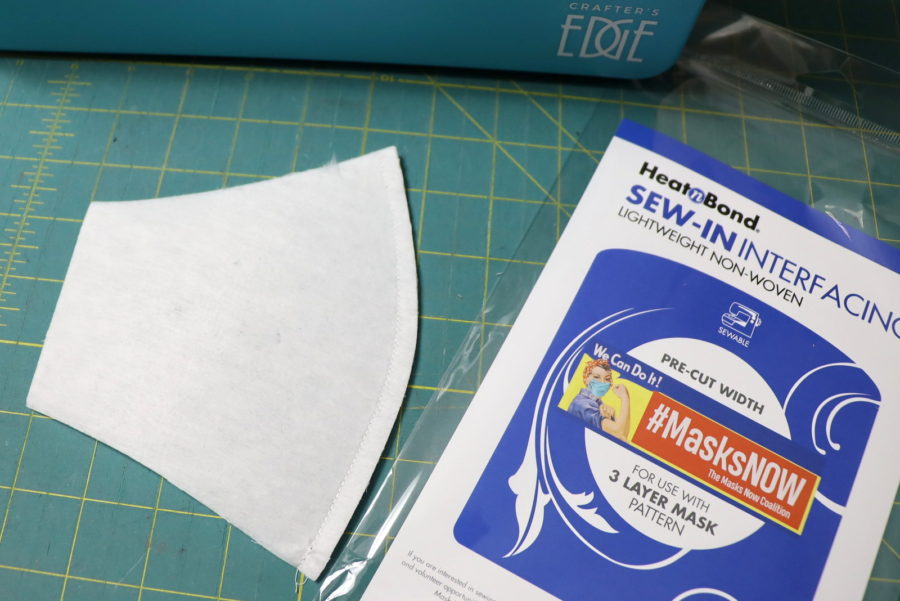
Clip the round edge as shown in directions or with pinking shears.
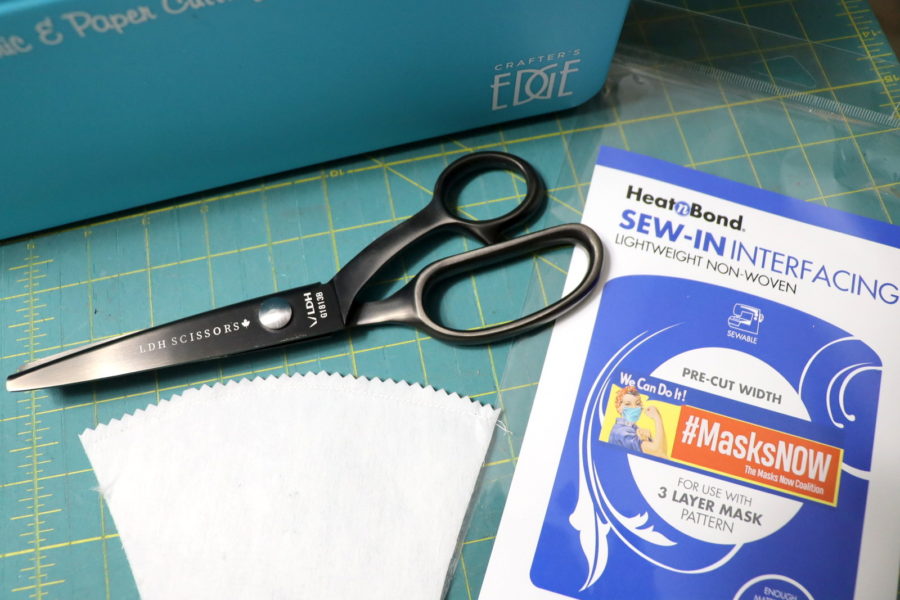
Press seam flat on mask interfacing and mask fabric.
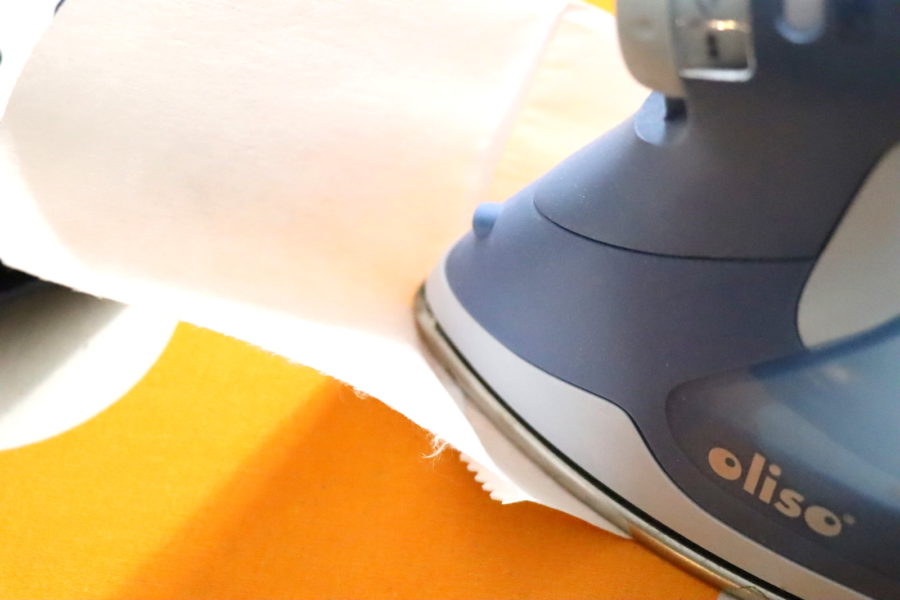
If you want to add a heart or other design to the mask, now is the time. Iron Heat n Bond Lite Iron-on Adhesive to the wrong side of the design fabric. Run it through your cutter following directions or cut out shape by hand. Green and red hearts were used on these masks.
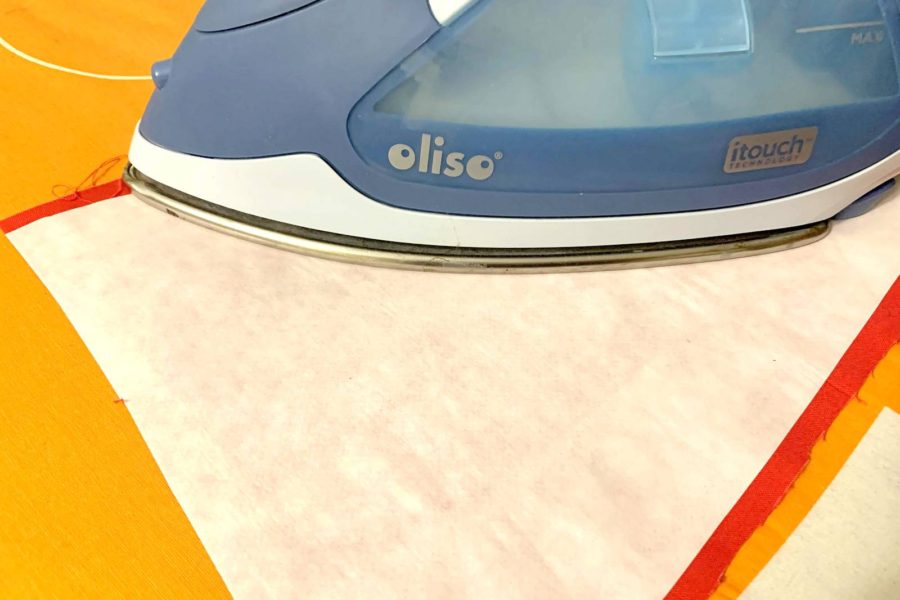
Stitch around the shape using a blanket or straight stitch.
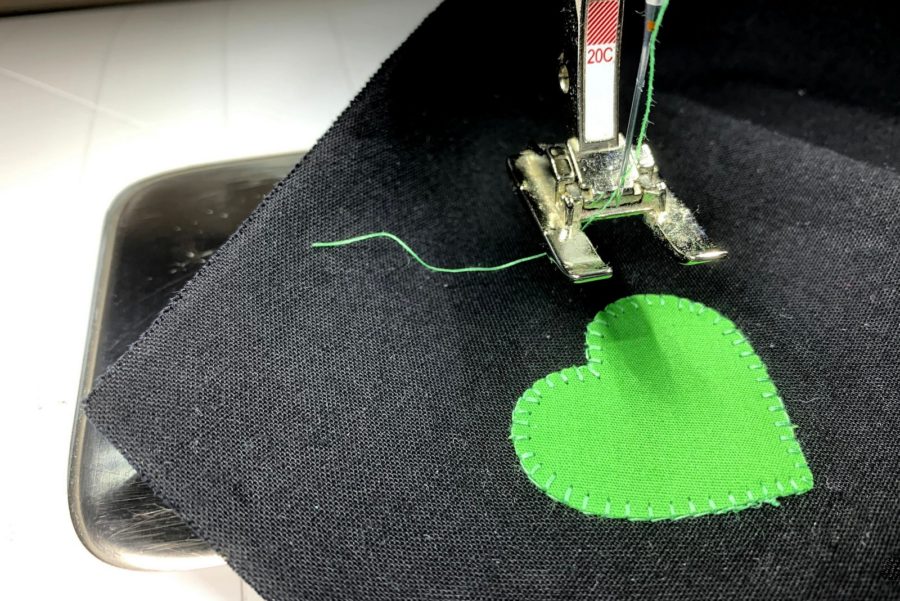
Sew elastic or fabric ties to mask lining, a quarter inch from edges. Stitch a couple of times over the elastic or ties to secure them a little better.
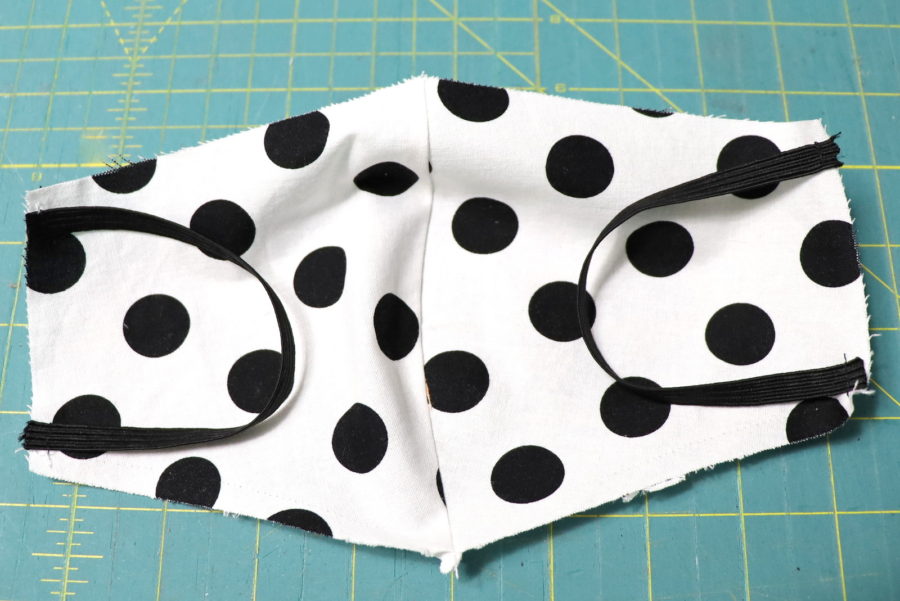
Layer mask: Lining face up, mask front face down, and interfacing face down.
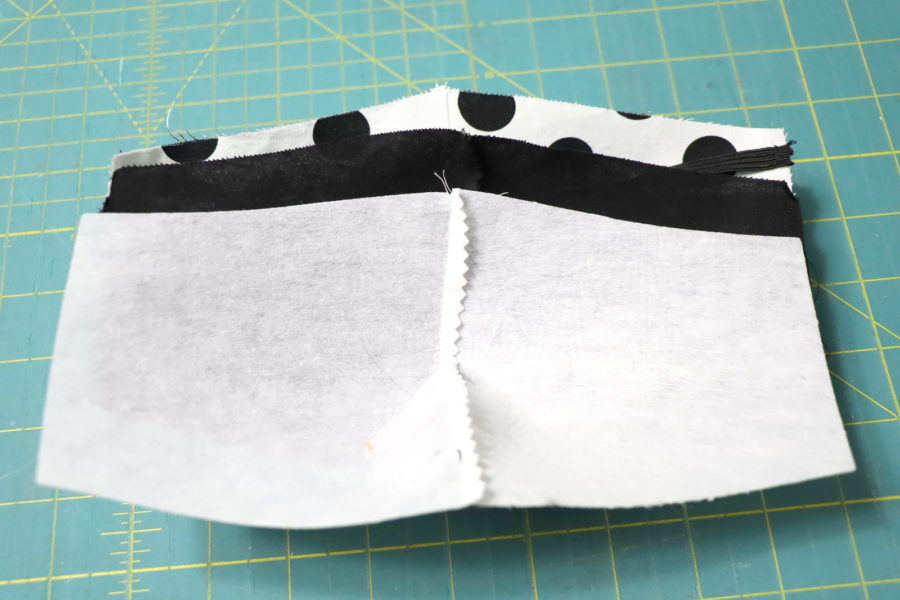
Pin all layers together.
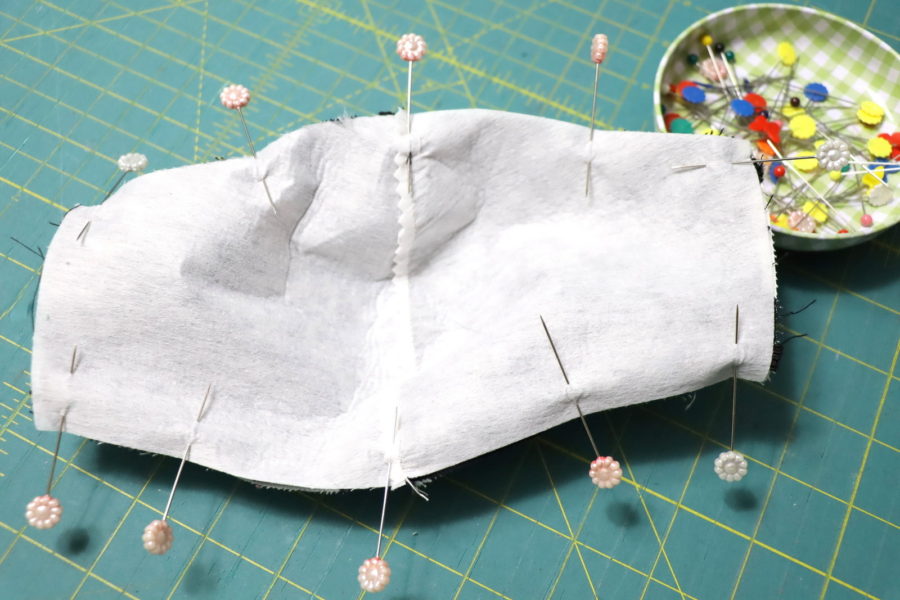
Sew around all edges making sure to catch all layers. Be careful to not catch the elastic or ties in the seams. Leave a 2″ opening for turning. Clip corners. Turn inside out. Press.
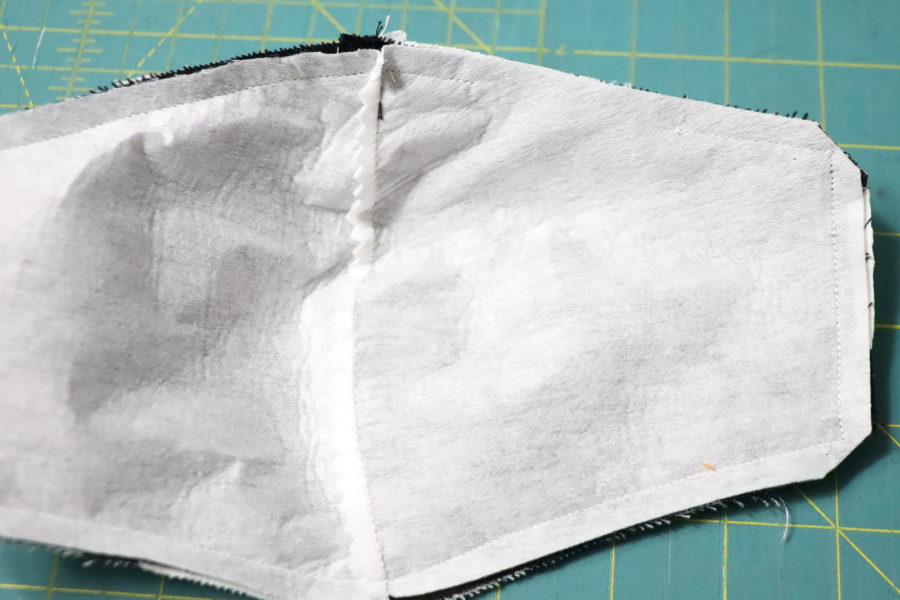
If you want to add wire to the nose area, now is the time to do it. Curl and crimp the ends tightly on the wire and tuck it centered in the seam at the mask top.
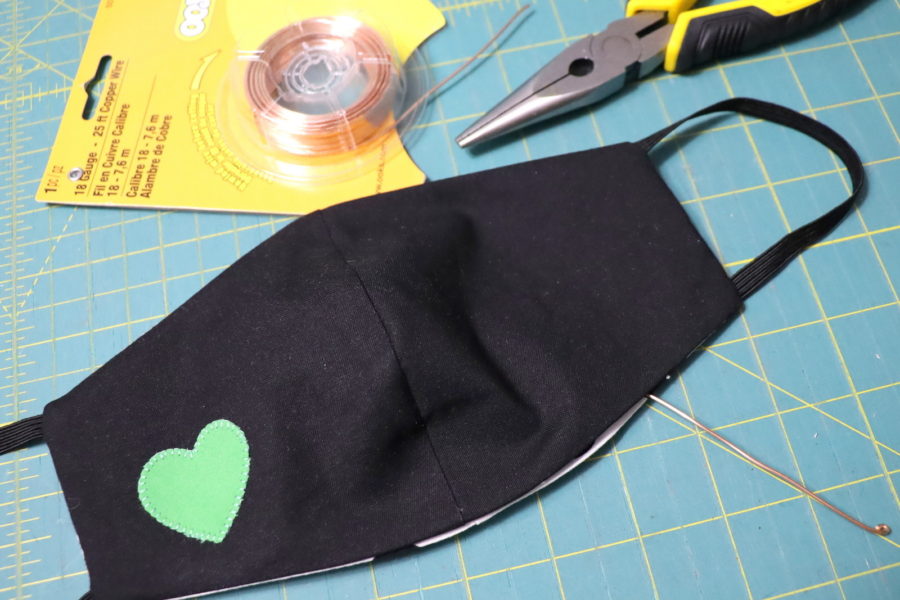
It helps to pin along the seam to keep the wire in place until you sew around the edges.
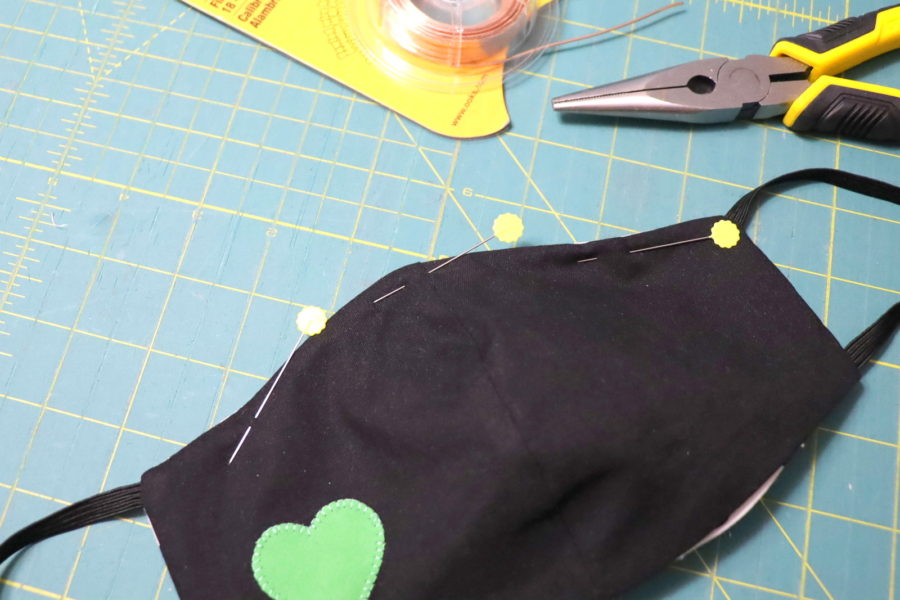
Slowly stitch 1/4″ from the edge all the way around the mask. Stitching slowly will help you avoid the wire and not break your needle. Be sure to sew open seam closed.
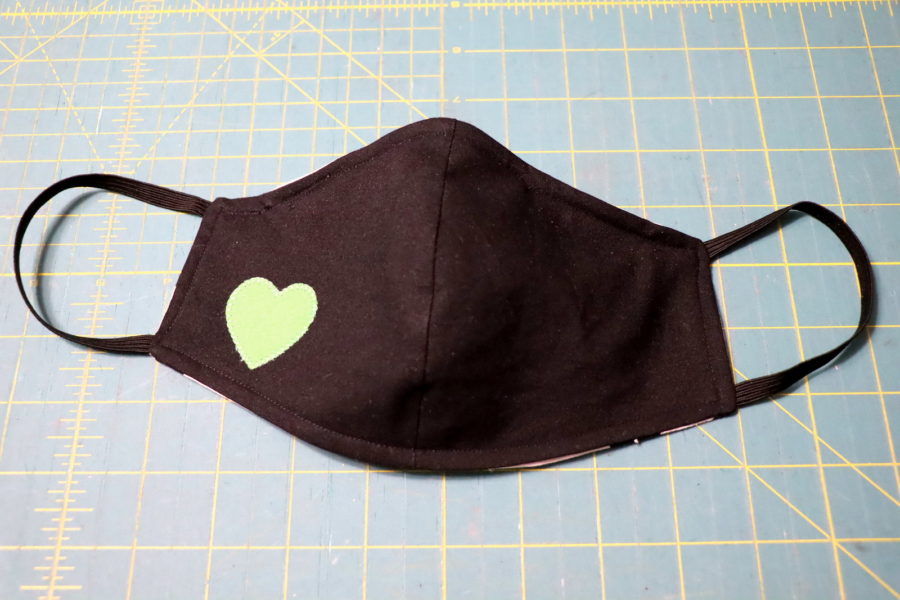
The masks work great with elastic, ties, or seam binding around the edges.
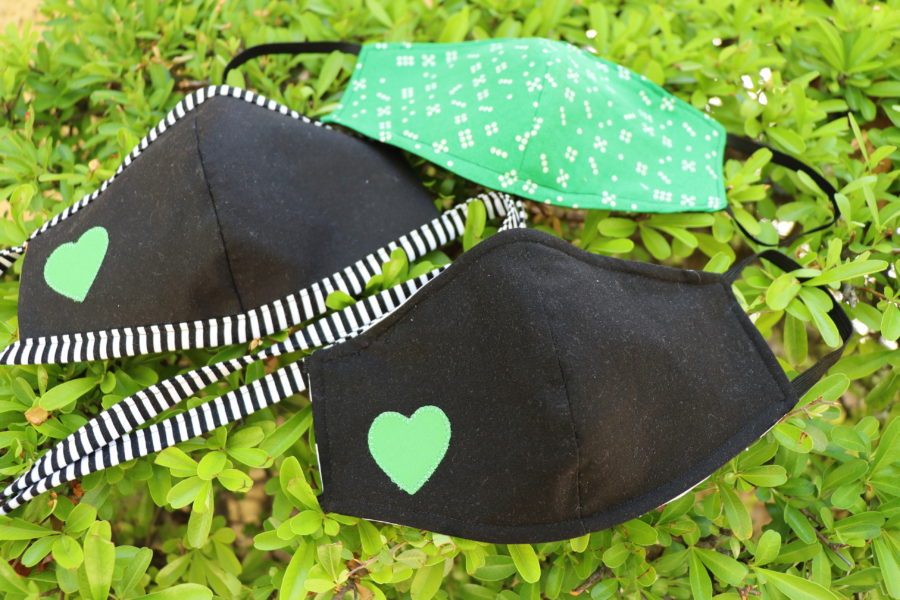
Using a different fabric for the lining is best. Making it a bit fun (with spider fabric) works, too!
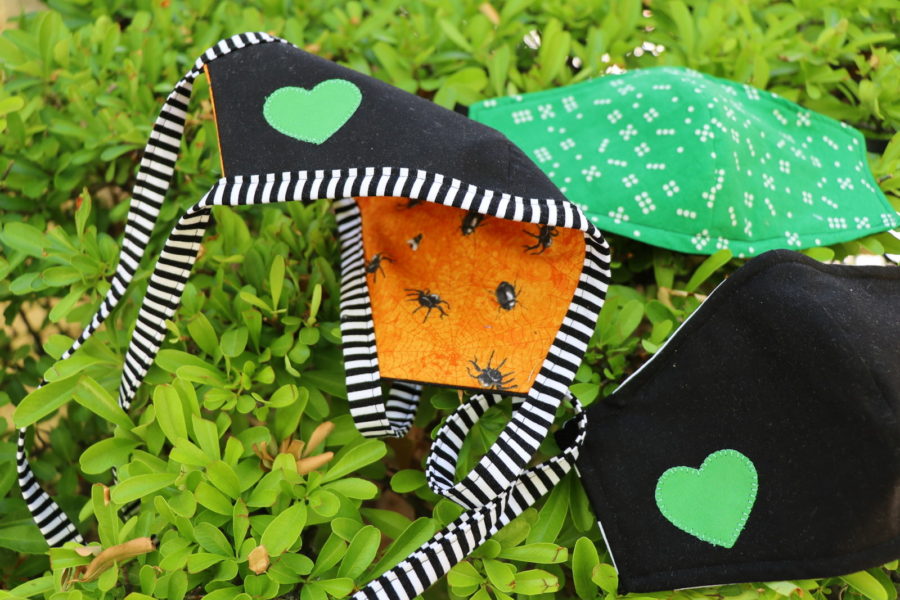
This sweet girl willingly posed with her mask AND she brought us cookies!
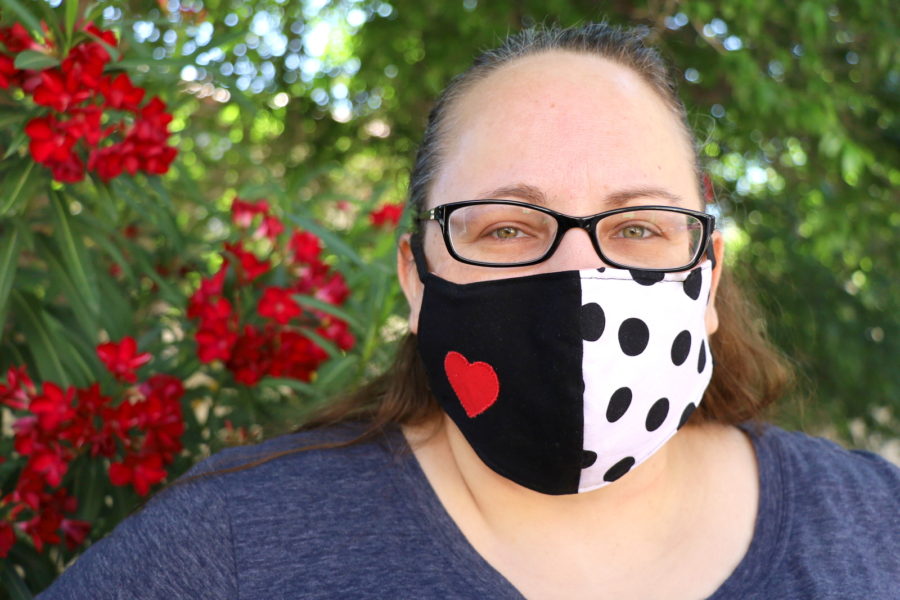
Bribing these guys with a delivered barbecue dinner helped me get these photos.
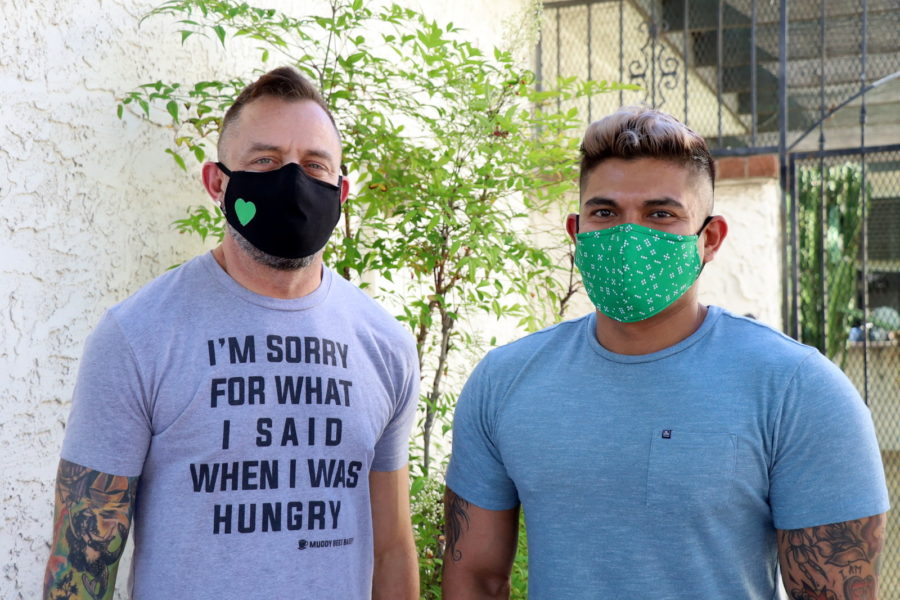
It’s always hard to see smiles when wearing masks, but I think their smiles show through.
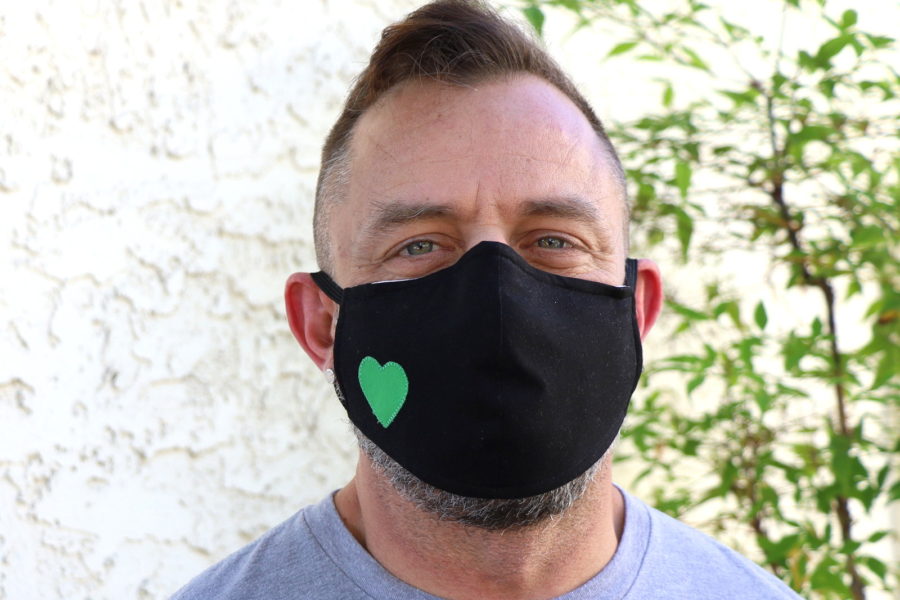
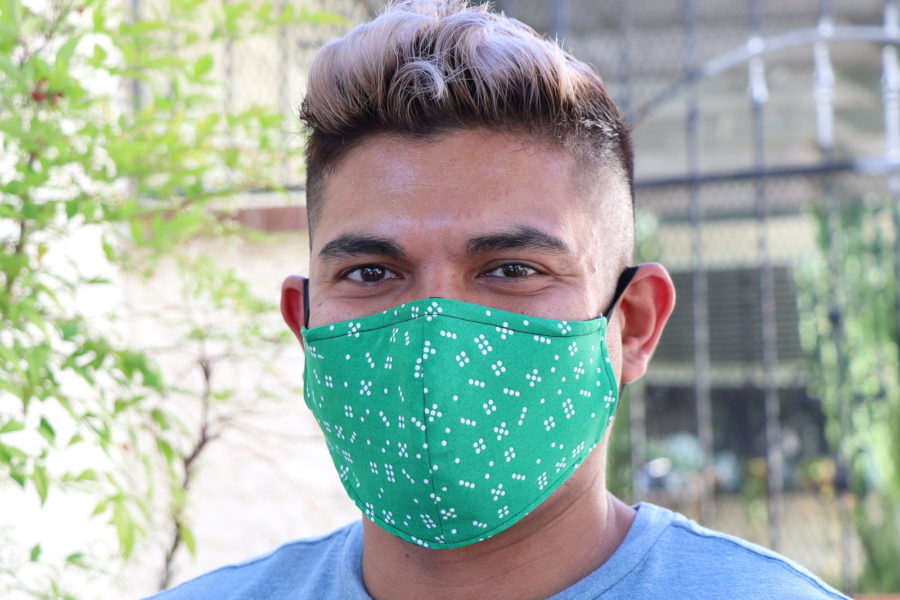
The Crafter’s Edge mask die can cut several sizes of masks, including for children.
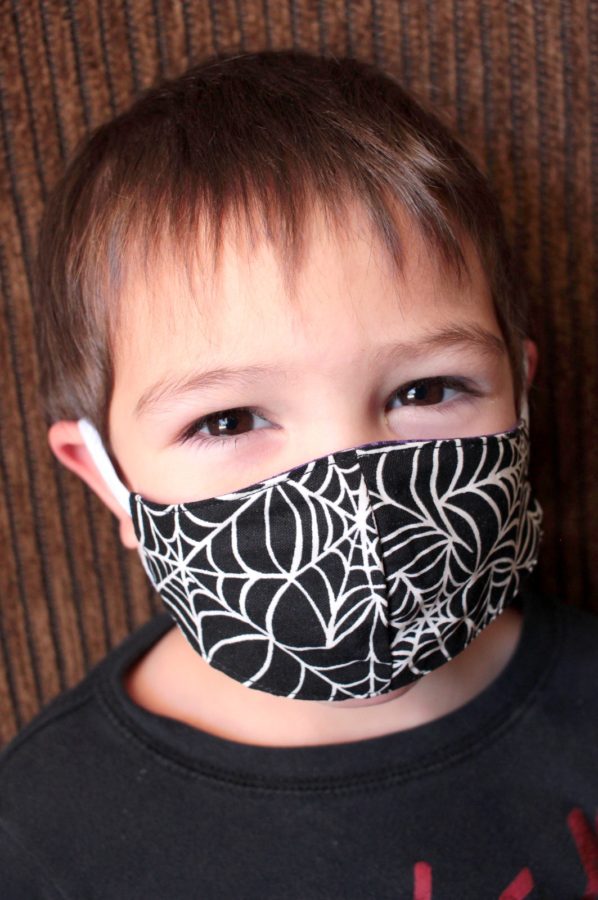
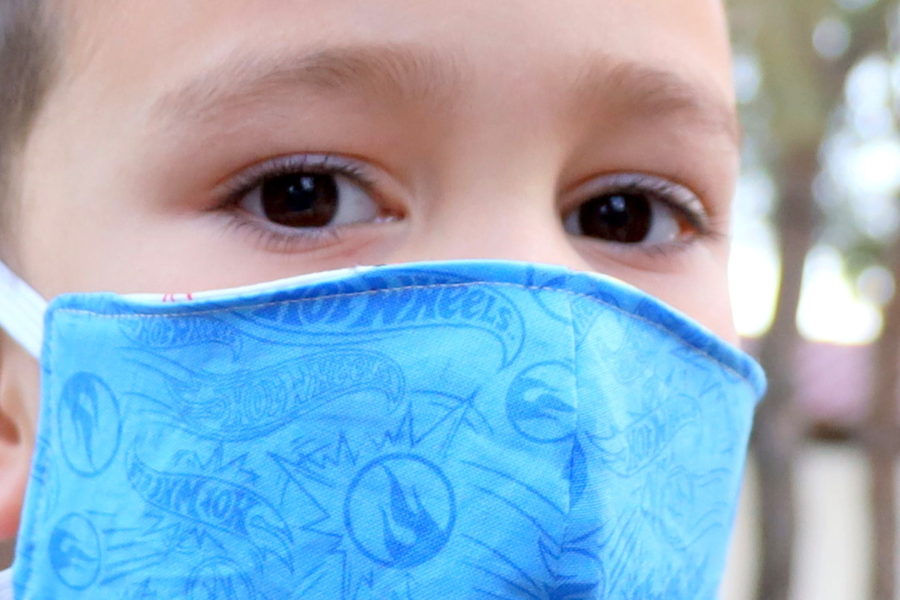
The masks sew together quickly and using the HeatnBond Sew-In interfacing gives a little more protection when wearing them in public. Stay safe and healthy!


Janet Favia
May 13, 2020 at 8:10 pm (5 years ago)Hi Carol!….Thank you! I recognized one of the monkey boys and realized this site is yours too! Thank you for the directions for using the sew in interfacing. I appreciate you.. Your very helpful. 🙂 I’m a step or two behind….but, Ill follow you!!!!
Kindest regards,
Janet
Victoria Joy Robison
May 16, 2020 at 5:34 pm (5 years ago)Oh my gosh! I signed up awhile ao and just now
read a lot about Thermoweb! I’ve been so busy.
Wow! I am impressed and excited for more projects! Thank you !
laurel A bush
June 30, 2020 at 11:58 am (5 years ago)Can I use the HeatnGond iron on adhesive UltraHold as filter in masks?
admin
July 1, 2020 at 1:58 pm (5 years ago)Hi Laurel….we do not recommend any fusible adhesive as a filter layer. Our HeatnBond Interfacing would be the better choice. See those here:
Leandra
August 15, 2020 at 1:18 pm (5 years ago)Do these wash well? I’ve read about prewashing/shrinking the interfacing because it shrinks disproportionately to the fabric and causes bubbles and wrinkles.
admin
August 26, 2020 at 3:11 pm (5 years ago)We don’t recommend drying in a machine but laying in outside and then pressing to smooth out any wrinkles that can happen with cotton.